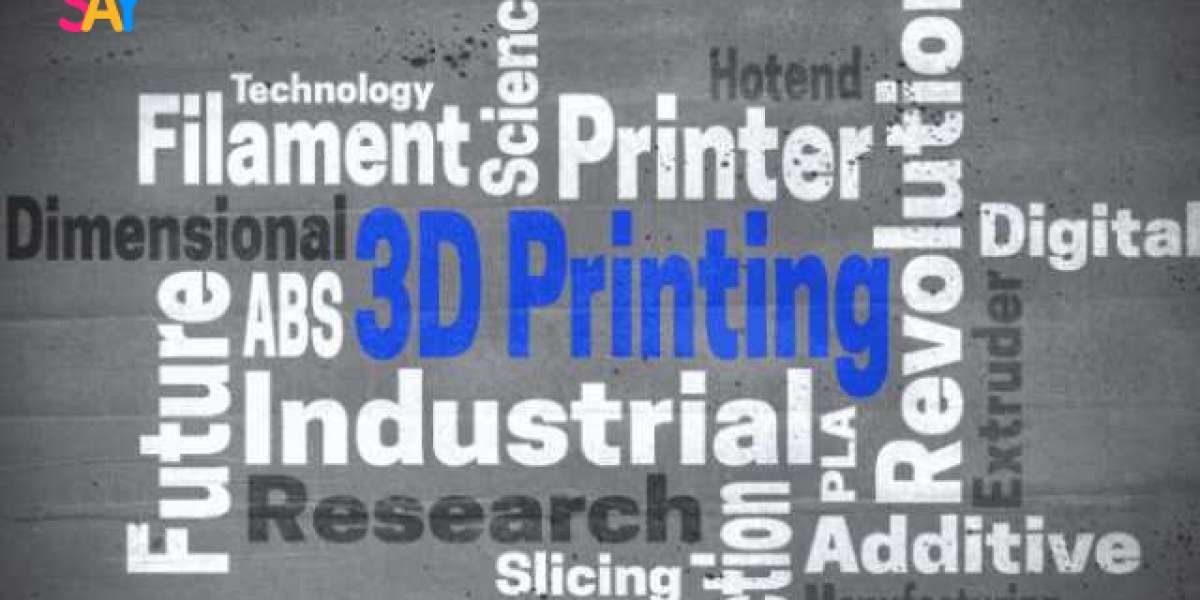Dubai is at the forefront of innovation and sustainability in the construction industry. With rapid urban development and ambitious sustainability goals, the city is leveraging 3D printing technology to reduce its environmental impact.
By integrating sustainable 3D printing techniques, Dubai’s construction sector is transforming the way buildings are designed, constructed, and maintained.
This approach not only promotes eco-friendly practices but also helps achieve the city's targets for resource efficiency and sustainable urban growth. Below, we explore how Dubai’s construction sector is using sustainable 3D printing to develop eco-friendly building materials and reshape the industry.
1. The Growing Adoption of Sustainable 3D Printing in Dubai
Dubai has set ambitious goals to become a global leader in sustainability, especially in its construction sector. In line with the Dubai 3D Printing Strategy, launched in 2016, the city aims to have 25% of its new buildings constructed using 3D printing technology by 2030. This initiative focuses on reducing construction waste, minimizing carbon emissions, and promoting the use of sustainable materials.
To achieve these goals, Dubai’s construction companies are increasingly adopting sustainable 3D printing methods that utilize eco-friendly building materials. By using innovative technologies, developers are able to construct buildings that are not only cost-effective but also environmentally responsible.
2. Utilizing Recycled and Sustainable Materials in 3D Printing
One of the most significant ways Dubai’s construction sector is integrating sustainable 3D printing is through the use of recycled and sustainable materials. Traditional construction methods rely heavily on resource-intensive materials such as concrete and steel, which have a substantial carbon footprint. In contrast, 3D printing allows for the use of alternative materials, including recycled concrete, bioplastics, and other eco-friendly composites.
By incorporating recycled construction waste into 3D printing processes, Dubai is reducing its reliance on virgin materials while also diverting waste from landfills.
For example, developers are experimenting with using recycled concrete aggregate (RCA), which can be mixed with binding agents to create sustainable 3D printing filaments. This not only reduces material waste but also lowers the environmental impact of new construction projects.
3. Reducing Carbon Emissions with Eco-Friendly 3D Printing Techniques
One of the major challenges in traditional construction is the high level of carbon emissions associated with material production and transportation. By integrating 3D printing, Dubai’s construction sector is able to significantly reduce these emissions. Unlike conventional construction, where materials are transported over long distances, 3D printing allows for on-site production, using locally sourced materials.
Furthermore, 3D printing requires less energy than traditional construction methods. The additive manufacturing process only uses the exact amount of material needed, which leads to less waste and fewer emissions. This aligns with Dubai’s goal to achieve net-zero carbon emissions in its construction sector by leveraging green technologies.
4. Enhancing Energy Efficiency with Sustainable Building Designs
Sustainable 3D printing in Dubai is not just about using eco-friendly materials; it also involves creating designs that improve energy efficiency. One of the advantages of 3D printing is its ability to create complex geometries that optimize natural light, ventilation, and thermal regulation. This can reduce the need for artificial lighting, air conditioning, and heating, leading to more energy-efficient buildings.
Dubai’s architects are using 3D printed facades and walls that incorporate insulation layers, reducing energy consumption and lowering the operational carbon footprint of buildings. These sustainable designs are particularly beneficial in Dubai’s hot desert climate, where energy-efficient structures can help reduce the urban heat island effect and improve indoor comfort.
5. Faster and More Efficient Construction Processes
In addition to being more sustainable, 3D printing Dubai accelerates construction timelines and reduces labor costs. By automating much of the building process, developers can complete projects in a fraction of the time compared to traditional methods. For example, Dubai's iconic 3D printed office building was completed in just 17 days, demonstrating the potential for rapid, sustainable construction.
The ability to quickly and efficiently construct buildings using 3D printing helps reduce the environmental impact of prolonged construction activities, such as the energy consumption of machinery and the carbon emissions from extended use of heavy equipment. This efficiency is crucial for Dubai, which continues to expand its urban landscape rapidly.
6. Supporting Circular Economy Principles
Dubai is also leveraging sustainable 3D printing to support the principles of a circular economy, where waste is minimized, and resources are reused. By using 3D printed components, developers can easily disassemble and recycle building elements at the end of their lifecycle, ensuring that materials can be repurposed rather than discarded.
For instance, modular 3D printed structures can be reconfigured and reused, allowing developers to adapt buildings to changing needs without generating additional waste. This adaptability aligns with Dubai’s efforts to reduce its environmental footprint and promote sustainable urban development.
7. Overcoming Challenges in Sustainable 3D Printing
While the benefits of sustainable 3D printing are clear, there are still challenges that Dubai's construction sector must address. These include the high upfront costs of 3D printing technology, the need for skilled labor, and the development of regulatory frameworks to ensure safety and quality.
However, Dubai’s commitment to innovation and sustainability is driving the adoption of new policies and incentives to overcome these hurdles.
By investing in research and development, Dubai is fostering a supportive environment for sustainable construction practices. As more developers adopt 3D printing, the costs are expected to decrease, making it a more viable option for large-scale projects.
Conclusion
Dubai’s construction sector is at the forefront of adopting sustainable 3D printing to develop eco-friendly building materials and promote green building practices. By using recycled materials, reducing waste, and enhancing energy efficiency, 3D printing is transforming the way buildings are designed and constructed in the city.
The integration of sustainable 3D printing not only helps Dubai achieve its ambitious sustainability goals but also supports the city’s vision of becoming a global leader in green urban development. As the technology continues to advance, Dubai's construction industry is well-positioned to set new standards for sustainable construction in the Middle East and beyond.




